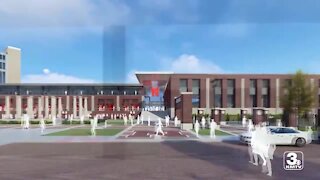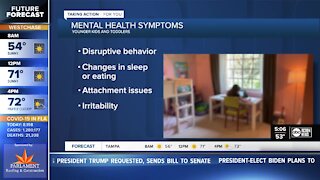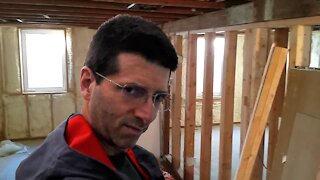Premium Only Content

Thelma looks forward to her Treatment with Synapse Doctors
Meet Thelma. Thelma is a previous patient of Edwin Haronian MD and Jonathan Kohan MD. Due to some life changing events, she had to stop coming to Synapse Orthopedic Group. She is now back at our office and looks forward to being treated again for an injury to her back. She feels confident with the doctors here at Synapse. She is doctors cared, followed up, and always showed their concern for her condition.
We look forward to treating her and we wish her the best during her treatment.
Call us to schedule an appointment: (818) 788-2400
Locations in Pomona, Sherman Oaks, and Los Angeles
Radiculopathy refers to a set of conditions in which one or more nerves are affected and do not work properly (a neuropathy). The location of the injury is at the level of the nerve root (radix = "root"). This can result in pain (radicular pain), weakness, numbness, or difficulty controlling specific muscles.
In a radiculopathy, the problem occurs at or near the root of the nerve, shortly after its exit from the spinal cord. However, the pain or other symptoms often radiate to the part of the body served by that nerve. For example, a nerve root impingement in the neck can produce pain and weakness in the forearm. Likewise, an impingement in the lower back or lumbar-sacral spine can be manifested with symptoms in the foot.
The radicular pain that results from a radiculopathy should not be confused with referred pain, which is different both in mechanism and clinical features.
Polyradiculopathy refers to the condition where more than one spinal nerve root is affected.
Radiculopathy is a mechanical compression of a nerve root usually at the exit foramen or lateral recess. It may be secondary to degenerative disc disease, osteoarthritis, facet joint degeneration/hypertrophy, ligamentous hypertrophy, spondylolisthesis, or a combination of these factors. More rare causes of radiculopathy may include radiation, diabetes mellitus, neoplastic disease, or any meningeal-based disease process.[citation needed]. Second-stage Lyme meningitis resembles aseptic meningitis and is often associated with radiculopathies.
Radiculopathy is a diagnosis commonly made by physicians in primary care specialities, orthopedics, physiatry, and neurology. The diagnosis may be suggested by symptoms of pain, numbness, and weakness in a pattern consistent with the distribution of a particular nerve root. Neck pain or back pain may also be present. Physical examination may reveal motor and sensory deficits in the distribution of a nerve root. In the case of cervical radiculopathy, Spurling's test may elicit or reproduce symptoms radiating down the arm. In the case of lumbosacral radiculopathy, a Straight leg raise maneuver may exacerbate radiculopathic symptoms. Deep tendon reflexes (also known as a Stretch reflex) may be diminished or absent in areas innervated by a particular nerve root.
Shoulder impingement syndrome is a common cause of shoulder pain. It occurs when there is impingement of tendons or bursa in the shoulder from bones of the shoulder. Overhead activity of the shoulder, especially repeated activity, is a risk factor for shoulder impingement syndrome. Examples include: painting, lifting, swimming, tennis, and other overhead sports. Other risk factors include bone and joint abnormalities.
With impingiment syndrome, pain is persistent and affects everyday activities. Motions such as reaching up behind the back or reaching up overhead to put on a coat or blouse, for example, may cause pain.
Over time, impingement syndrome can lead to inflammation of the rotator cuff tendons (tendinitis) and bursa (bursitis). If not treated appropriately, the rotator cuff tendons can start to thin and tear.
For more information please visit our website at: http://www.synapsedoctor.com
You can also follow our social media pages at:
http://www.facebook.com/synapsedoctor
http://www.instagram.com/synapsedoctor
http://www.twitter.com/synapsedoctor
-
 2:24
2:24
WFTX
4 years agoGulf Coast Humane Society looks forward to Giving Tuesday
6 -
 1:53
1:53
KNXV
4 years agoValley doctors overwhelmed with COVID patients
151 -
 3:32
3:32
WhatDaStat
4 years ago $0.01 earnedCountries With Most Medical Doctors per 1000
159 -
 2:13
2:13
KTNV
4 years agoSNHD pushing forward with vaccine rollout
41 -
 0:30
0:30
KTNV
4 years agoJoe Biden moves forward with transition process
1.78K4 -
 1:25
1:25
KMTV
4 years agoMemorial stadium renovations moving forward with changes
21 -
 3:34
3:34
KGTV
4 years agoMore mixed messages from doctors on President Trump's COVID-19 treatment
150 -
 1:37
1:37
WFTS
4 years agoDoctors concerned as mental health issues with kids increase
55 -
 6:24
6:24
Fun With Eric
4 years ago"Project One" Moves Forward with Spray Foam Insulation!
562 -
 2:00
2:00
WCPO
4 years agoDoctors unaffiliated with hospitals wonder when they'll get vaccinated
12